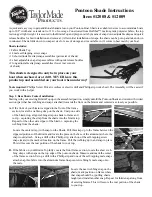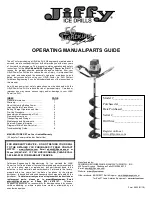
1
2
Skin
Pad
ELECTRODE APPLICATION
ELECTRODE PLACEMENT
SKIN PREPARATION
Anterior-Anterior (Apex/Lateral-Sternum)
OPERATING TEMPERATURE:
SHORT TERM STORAGE TEMPERATURE:
LONG TERM STORAGE TEMPERATURE:
0
°
C to 50
°
C (32
°
F to 122
°
F)
-30
°
C to 65
°
C (-22
°
F to 149
°
F)
0
°
C to 35
°
C (32
°
F to 95
°
F)
Atrial Cardioversion
Anterior / Posterior Electrode Placement
(Recommended)
Recommended for defibrillation, ventricular cardioversion and ECG monitoring only. Not
recommended for noninvasive pacing. Noninvasive pacing with Anterior-Anterior electrode
placement can lead to decreased patient tolerance and increased capture thresholds.
Sternum:
Align the CPR sensor with the sternal notch. Grasp the
Sternum electrode and peel away the plastic liner.
Apply on the patient's upper right torso.
Placement of Apex electrode varies slightly in
anterior-anterior configuration. The more lateral
placement increases the likelihood that more of the
heart musculature will be within the current pathway.
Apex/Lateral:
Grasp the Apex/Lateral electrode at the bottom and peel
away the plastic liner. Apply so that the top of the gel
treatment area aligns with the bottom of the pectoral
muscle on a male patient. Position electrode under the
breast on a female patient.
Avoid any contact between nipple and gel
treatment area. Skin of the nipple area is more
susceptible to burning.
Back (Posterior):
Grasp the electrode at the wire exit and peel away the
plastic liner. Place to the left of the spine just below
the scapula at the heart level.
Front:
R2137-02 Rev. E
TM
OneStep
INDICATIONS FOR USE
Defibrillation Noninvasive Pacing Cardioversion ECG monitoring
PRECONNECTING THE ELECTRODES
Instructions for Use
CPR Feedback
Grasp the electrode and peel away the plastic liner.
Apply to upper right torso on the third intercostal space,
midclavicular line. If CPR sensor is on the electrode,
align the CPR sensor with the sternal notch.
CPR A/A Electrodes with Green Connector
For use on adult patients with ZOLL
®
R Series
®
and 8009-0020 connector, E Series
®
and 8000-0370 connector, and AED Pro
®
with
software version 2.86 or higher by trained personnel including Physicians, Nurses, Paramedics, Emergency Medical Technicians and
Cardiovascular Laboratory Technicians. The OneStep Adult electrodes are not indicated for use on a patient less than 8 years of age
or weighing less than 55lbs (25kg).
BACK
Anterior-Posterior (Apex/Front-Back)
Back (Posterior):
Front:
APEX / FRONT
Separate CPR device from the sternum pad.
Grasp the Back/Sternum electrode at the red
tab, peel from the package liner. Place to the
left of the spine just below the scapula at the
heart level.
Always apply back electrode first.
If front electrode is already in place when
patient is being maneuvered for placement of
the back, the front may become partially lifted.
This could lead to arcing and skin burns.
Place CPR sensor in center of chest and
allign with sternal notch.
Grasp the Apex/Front electrode at the red
tab, peel from the package liner. and
apply over cardiac apex with the nipple
under adhesive area on a male patient.
Position under breast on a female patient.
Avoid any contact between nipple and gel
treatment area. Skin of the nipple area is
more susceptible to burning.
BACK
FRONT
APEX/LATERAL
STERNUM
Recommended for defibrillation, noninvasive pacing, ventricular cardioversion, and ECG monitoring.
Optimal for noninvasive pacing because it increases patient tolerance and decreases capture thresholds.
Side 1 of 2
1. Do not open until ready to use.
2. Periodically inspect electrode packaging for integrity & expiration date.
3. Attach electrode connector to AED Pro or ZOLL Multi-Function cable and connector.
4. Open electrode package by pulling apart at yellow arrow.
5. Self test connection disengages after the electrode has been removed from the liner.
1. Remove excess chest hair. Clip if necessary to maximize gel to skin contact. Clipping is recommended
since shaving can leave tiny microabrasions that can lead to patient discomfort during pacing.
2. Ensure skin is clean and dry under electrode. Remove any debris, ointments, skin preps, etc.
with water (and mild soap if needed). Wipe off excess moisture/diaphoresis with dry cloth.
Instructions
Excessive hair can inhibit good
coupling (contact), which can
lead to the possibility of arcing
and skin burns.
1. Apply one edge of the electrode securely to the patient.
2. “Roll” the electrode smoothly from that edge to the other. Be careful not to trap
any pockets of air between the gel and skin.
Instructions
Poor adherence
and/or air
under the electrodes can lead
to the possibility of arcing and
skin burns.
Rx
ONLY
NOT MADE WITH
NATURAL RUBBER LATEX.
32
°
F
0
°
C
50
°
C
122
°
F




















